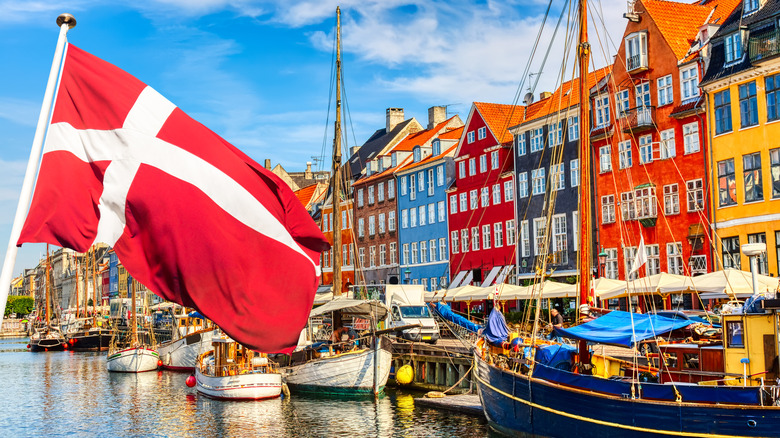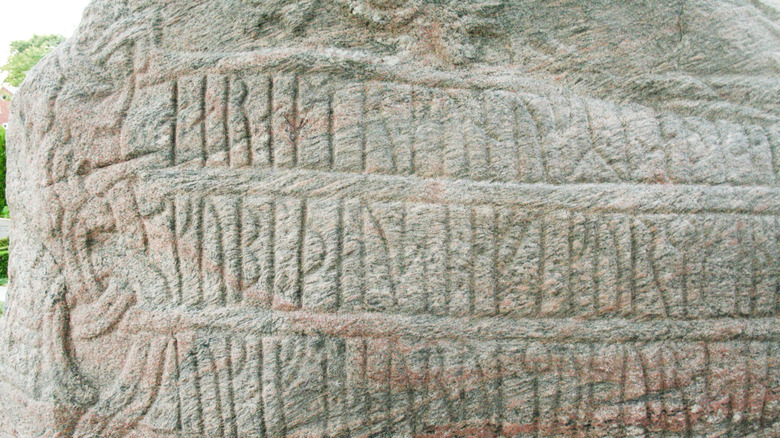This Is How Denmark Got Its Name
Denmark — home to beautiful row houses, Kierkegaard, and The Little Mermaid — is also home to a great debate about the origin of the country's name. The "mark" part of the name refers to the meaning of "mark" (in Danish, English, and other Germanic languages) as "border" or "borderlands" (according to the Online Etymology Dictionary). And Denmark, called "Danmark" in the Danish language (per Britannica), is clearly similar to the name of its residents, the Danes. It's controversial, however, whether the country's name is rooted in the name of its people, or whether the name ultimately comes from the mythical King Dan, as claimed in the histories of the early Danish historian Saxo Grammaticus.
The general consensus among etymologists is that the name comes from the Danes. According to the Online Etymology Dictionary, it was originally a corruption of the Old High German "tanar," meaning sandbank, or the Proto-Germanic prefix "Den-," meaning low ground — both of which could reasonably be used to describe the long coastal regions of Scandinavia. Originally, the name "Denmark" referred to all of western Scandinavia, as a synonym for "the lands of the Danes and Northmen," per the Online Etymology Dictionary.
The story of Angul and Dan
In Saxo Grammaticus' "The Danish History" — Denmark's first major work of literature and the inspiration for Shakespeare's "Hamlet," per Britannica — he describes two brothers, Angul and Dan. Angul was the father of the Angles, according to Saxo, the Germanic people who later settled Britain and gave it the name "England." Dan, however, was the father of Denmark, and his progeny became the Kings and Queens that ruled thereafter.
It's unclear, however, if a real Dan ever existed — the first confirmed king of Denmark is Gorm the Old in the 10th century (via the Danish Monarchy). Use of the word "Denmark" can probably be traced back to around this time as well — Gorm's son, the Christianizer King Harald Bluetooth, erected a monument known as the Jelling Stone in about the year 965, which refers to Harald's country as "Denmark" (per the National Museum of Denmark). Because of this, the Jelling Stone is sometimes referred to as Denmark's birth certificate.

